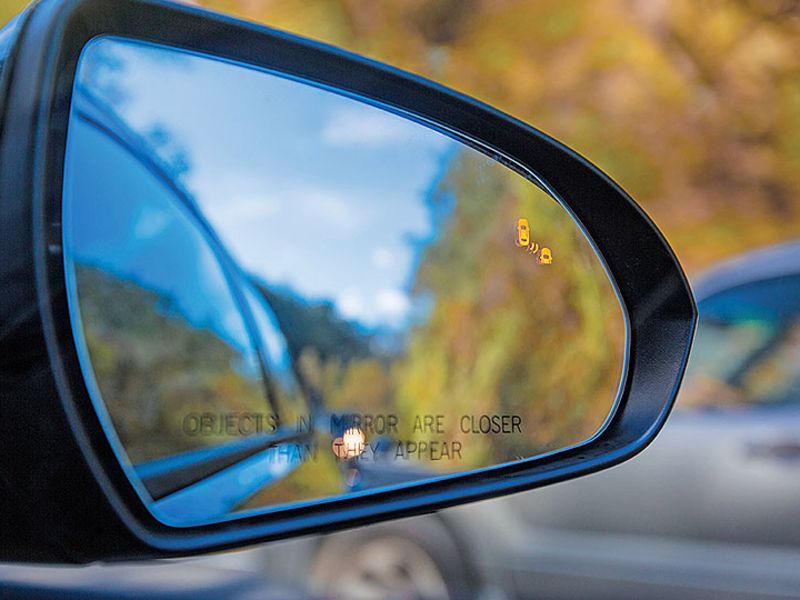
AAA, Consumer Reports, J.D. Power, the National Safety Council, Partners for Automated Vehicle Education and SAE International have come together to offer “common naming” recommendations for advanced driver-assistance systems. Here are the recommended names and definitions of 20 technologies, divided into 5 categories.
Blind Spot Warning: Detects vehicles in the blind spot while driving and notifies the driver to their presence. Some systems provide an additional warning if the driver activates the turn signal.
Forward Collision Warning: Detects a potential collision with a vehicle ahead and alerts the driver. Some systems also provide alerts for pedestrians or other objects
Lane Departure Warning: Monitors vehicle’s position within the driving lane and alerts driver as the vehicle approaches or crosses lane markers.
Parking Collision Warning: Detects objects close to the vehicle during parking maneuvers and notifies the driver.
Rear Cross Traffic Warning: Detects vehicles approaching from the side at the rear of the vehicle while in reverse gear and alerts the driver. Some systems also warn for pedestrians or other objects.
Automatic Emergency Braking: Detects potential collisions with a vehicle ahead, provides forward collision warning and automatically brakes to avoid a collision or lessen the severity of impact. Some systems also detect pedestrians or other objects.
Automatic Emergency Steering: Detects potential collisions with a vehicle ahead and automatically steers to avoid or lessen the severity of impact. Some systems also detect pedestrians or other objects.
Reverse Automatic Emergency Braking: Detects potential collisions while in reverse gear and automatically brakes to avoid or lessen the severity of impact. Some systems also detect pedestrians or other objects
Adaptive Cruise Control: Cruise control that also assists with acceleration and/or braking to maintain a driver-selected gap to the vehicle in front. Some systems can come to a stop and continue while others cannot.
Lane Keeping Assistance: Provides steering support to assist the driver in preventing the vehicle from departing the lane. Some systems also assist to keep the vehicle centered within the lane.
Active Driving Assistance: Provides steering and brake/acceleration support to the driver at the same time. The driver must constantly supervise this support feature and maintain responsibility for driving.
Backup Camera: Displays the area behind the vehicle when in reverse gear.
Surround View Camera: Displays the immediate surroundings of some or all sides of the vehicle while stopped or during low-speed maneuvers.
Active Parking Assistance: Assists with steering and potentially other functions during parking maneuvers. Driver may be required to accelerate, brake and/or select gear position. Some systems are capable of parallel and/or perpendicular parking. The driver must constantly supervise this support feature and maintain responsibility for parking.
Remote Parking: Without the driver being physically present inside the vehicle, provides steering, braking, accelerating and/or gear selection while moving a vehicle into or out of a parking space. The driver must constantly supervise this support feature and maintain responsibility for parking.
Trailer Assistance: Assists the driver with visual guidance while backing toward a trailer or during backing maneuvers with a trailer attached. Some systems may provide additional images while driving or backing with a trailer. Some systems may provide steering assistance during backing maneuvers.
Automatic High Beams: Switches between high- and low-beam headlamps automatically based on lighting and traffic.
Driver Monitoring: Observes driver actions to estimate if they are not engaged in the task of driving. Some systems may monitor eye movement and/or head position.
Head-Up Display: Projects information relevant to driving into the driver’s forward line of sight.
Night Vision: Improves forward visibility at night by projecting enhanced images on instrument cluster or head-up display.